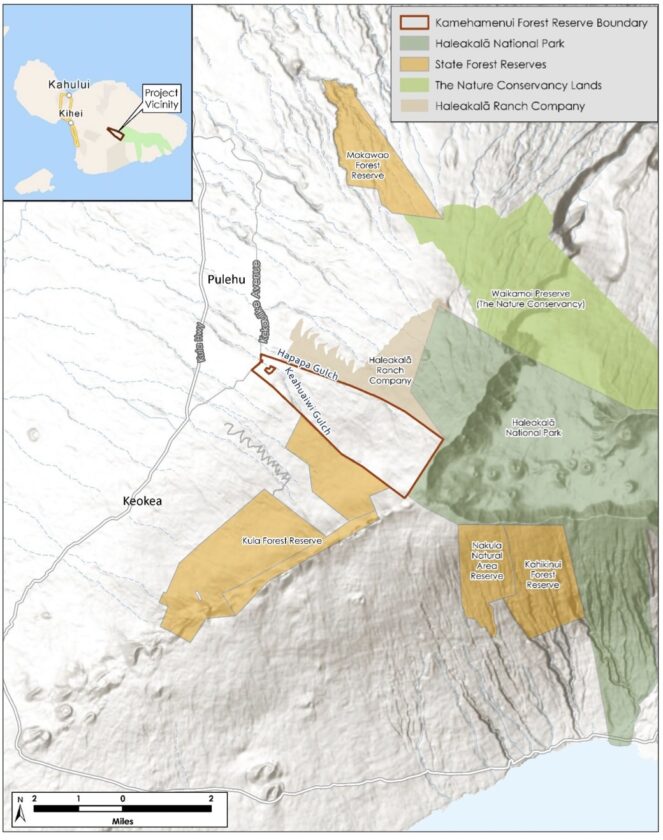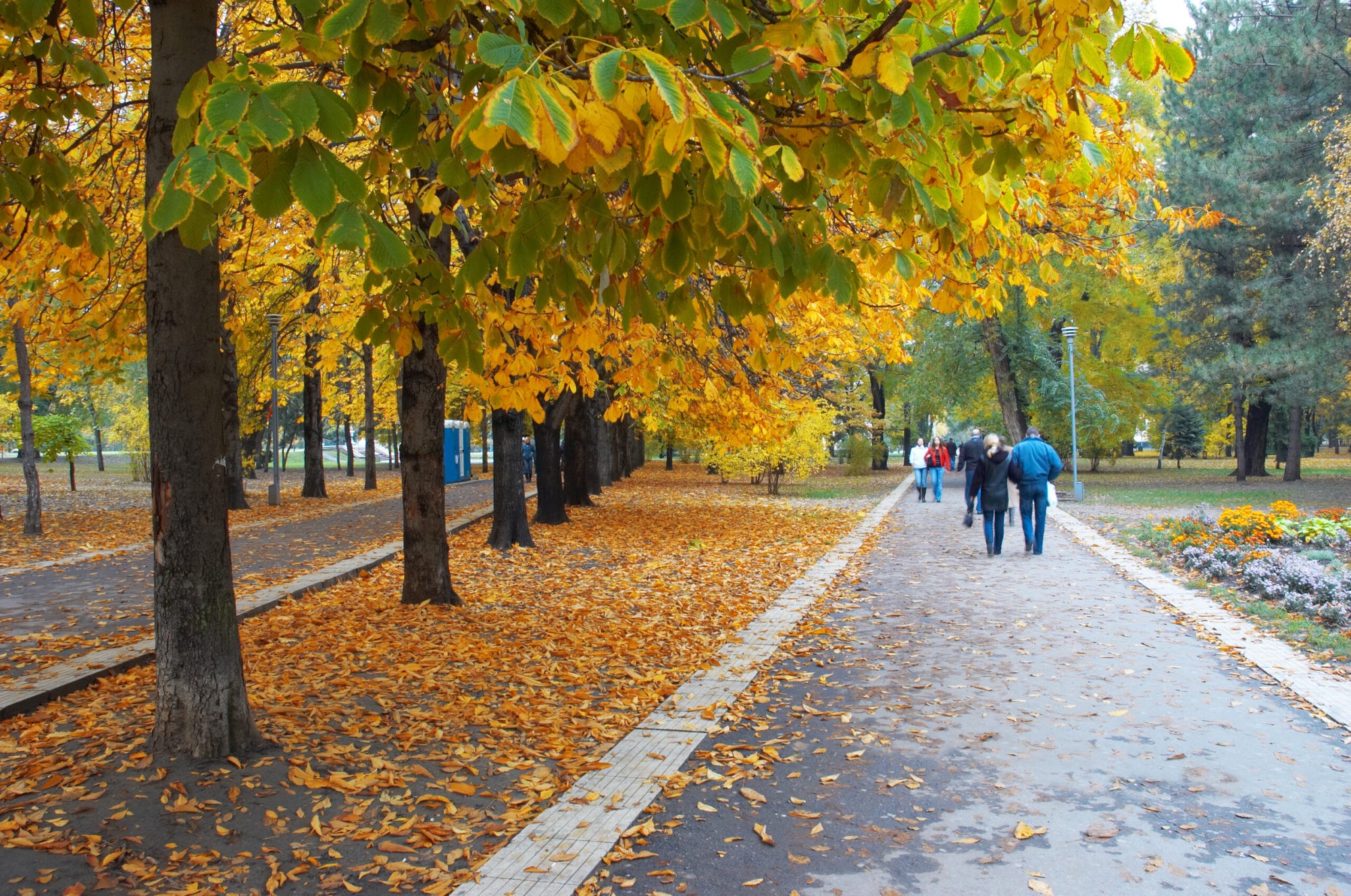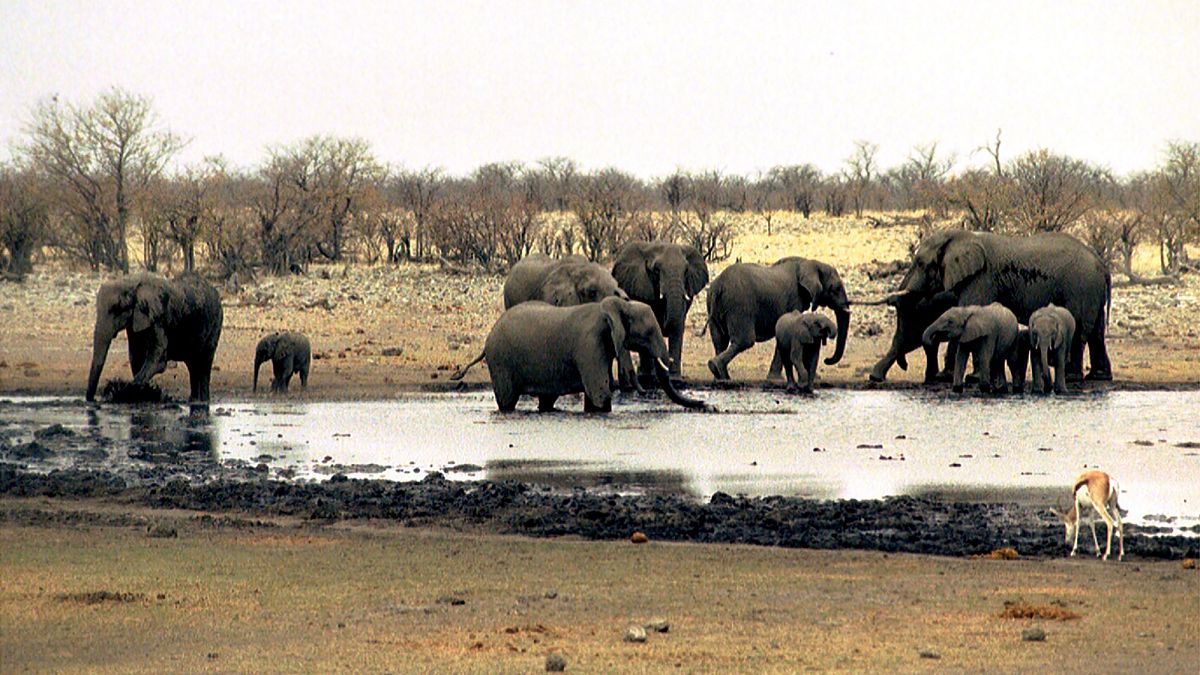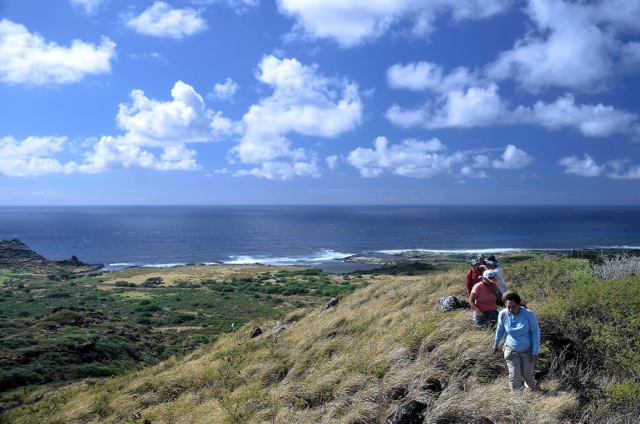Report on the Kamehamenui Forest Reserve Management Plan and Sustainable Development Goals
Executive Summary
A proposed Management Plan for the new 3,433-acre Kamehamenui Forest Reserve on Haleakala has been presented, outlining a significant ecological restoration effort. While the plan strongly aligns with Sustainable Development Goal 15 (Life on Land) through its focus on native forest restoration, it has drawn considerable concern from the Kula community. Stakeholders report that the plan inadequately addresses key aspects of SDG 11 (Sustainable Cities and Communities) and SDG 13 (Climate Action) related to wildfire safety and resilience. Furthermore, potential impacts on local livelihoods raise questions about its alignment with SDG 8 (Decent Work and Economic Growth) and SDG 2 (Zero Hunger). The consultation process has highlighted challenges in achieving SDG 17 (Partnerships for the Goals), with residents citing a lack of detailed information and meaningful engagement.
Analysis of the Management Plan in Relation to SDG 15: Life on Land
The primary objective of the management plan is the restoration and protection of terrestrial ecosystems, a core target of SDG 15. The plan aims to mitigate threats from invasive species, wildfire, and climate change to protect the watershed and native biodiversity.
- Ecosystem Restoration: The plan calls for restoring 75% of the reserve to native forest, directly contributing to the goal of halting and reversing land degradation.
- Biodiversity Protection: The reserve includes 1,171 acres of federally designated critical habitat for 10 plant and two native bird species, making its effective management crucial for halting biodiversity loss.
- Phased Implementation: The restoration is structured in three phases, targeting different elevations of the reserve.
- Phase One: 2,210 acres in the upper reserve.
- Phase Two: 714 acres in the mid-elevations.
- Phase Three: 510 acres in the lower western portion.
Community Concerns and Implications for SDG 11 and SDG 13
Local residents and community groups have expressed significant safety concerns, asserting that the plan fails to integrate strategies for making human settlements safe and resilient, a key component of SDG 11. Given the 2023 wildfires that destroyed 19 homes in the Upcountry area, wildfire mitigation is a critical element of climate adaptation (SDG 13) for the community.
- Lack of Wildfire Mitigation Details: The plan is criticized for its lack of specific details on how forest fires will be managed and prevented, particularly near residential communities.
- Elimination of Firebreaks: A central concern is the phased withdrawal of land from cattle grazing. Ranchers and residents state that active grazing in the lower reserve currently serves as an essential firebreak, and its removal could increase the community’s vulnerability.
- Increased Fire Risk from Recreation: The proposal to add three camping locations raises fears of human-caused fires, similar to a 2007 fire in Polipoli started by a cigarette.
Socio-Economic Considerations and Links to SDG 2 and SDG 8
The plan’s proposal to reduce grazing land has direct implications for the local economy and food systems, impacting progress toward SDG 8 (Decent Work and Economic Growth) and SDG 2 (Zero Hunger).
- Impact on Livelihoods: Dozens of small ranchers depend on the reserve’s pastureland to prepare livestock for sale. The reduction of this land threatens their economic viability, which has already been strained by drought and invasive deer.
- Sustainable Agriculture: Ranchers argue that maintaining pastures in the lower reserve represents a sustainable land-use practice that supports local food production while also providing a community benefit through fire control.
Challenges in Governance and SDG 17: Partnerships for the Goals
The process of developing and presenting the plan has revealed a disconnect between state authorities and local stakeholders, undermining the principles of effective partnership outlined in SDG 17.
- Insufficient Consultation: Community groups reported feeling rushed, having received the 724-page draft plan and environmental assessment only shortly before the public comment period ended on October 23.
- Unaddressed Concerns: Despite participating in workshops in 2022, residents felt their primary concerns regarding fire safety and the role of ranching were not adequately reflected in the draft plan.
- Implementation Gaps: A sentiment of “angst” was reported, stemming from a perceived “bottleneck” in the implementation of previously studied fire hazard reduction plans for the area.
- Lack of Official Response: The state Department of Land and Natural Resources did not respond to a request for comment on these issues.
1. Which SDGs are addressed or connected to the issues highlighted in the article?
SDG 15: Life on Land
- The article’s central theme is the “Kamehamenui Forest Reserve Management Plan,” which aims to restore 75% of the 3,433-acre reserve to native forest. This directly relates to protecting, restoring, and promoting the sustainable use of terrestrial ecosystems. The text also highlights the reserve’s importance as a “federally designated critical habitat for 10 plants and two bird species” and the need to protect the watershed from threats like invasive plants and wildfire.
SDG 11: Sustainable Cities and Communities
- The article emphasizes the community’s concerns about safety and resilience to natural disasters, specifically wildfires. Residents express that the plan “lacks details on controlling wildfires.” The memory of the “2023 wildfires” that led to the “loss of 19 homes” in the area makes disaster risk reduction a critical issue for the community, connecting directly to making human settlements safe and resilient.
SDG 13: Climate Action
- The article explicitly mentions that “wildfire and climate change are a constant threat to the watershed and native plants and animals.” The community’s discussion about mitigating wildfire risk and the state’s plan for forest restoration are both actions related to climate adaptation and strengthening resilience to climate-related hazards.
SDG 16: Peace, Justice and Strong Institutions
- The article details the community’s frustration with the planning process. Residents reported they felt “rushed going through the 724-page document” and “did not get a copy of the draft of the management plan or environmental assessment until earlier this month,” despite participating in workshops in 2022. This points to issues with inclusive, participatory, and responsive decision-making by public institutions.
SDG 2: Zero Hunger
- The plan’s impact on local agriculture and food production is a key concern. The article discusses the “phased approach to withdrawing portions of the land from the grazing” and how ranchers have used the land “to prepare their livestock for sale.” A rancher notes they have already had to “cut back our herds” due to drought, and the loss of more grazing land threatens their livelihood and the local livestock industry.
2. What specific targets under those SDGs can be identified based on the article’s content?
-
SDG 15: Life on Land
- Target 15.1: Ensure the conservation, restoration and sustainable use of terrestrial and inland freshwater ecosystems. The plan to restore “75% of the reserve to native forest” is a direct action towards this target.
- Target 15.2: Promote the implementation of sustainable management of all types of forests, halt deforestation, and restore degraded forests. The entire “Kamehamenui Forest Reserve Management Plan” is an example of implementing sustainable forest management.
- Target 15.5: Take urgent action to reduce the degradation of natural habitats and halt the loss of biodiversity. The plan aims to protect a reserve that contains “federally designated critical habitat for 10 plants and two bird species,” directly addressing this target.
-
SDG 11: Sustainable Cities and Communities
- Target 11.5: Significantly reduce the number of people affected by disasters. The community’s focus on the plan’s lack of detail for “controlling wildfires” and the reference to the “loss of 19 homes” in the 2023 fires highlight the importance of reducing the impact of such disasters.
- Target 11.b: Substantially increase the number of cities and human settlements adopting and implementing integrated policies and plans towards… disaster risk reduction. The management plan is such a policy, but residents are critiquing its effectiveness in reducing wildfire risk.
-
SDG 13: Climate Action
- Target 13.1: Strengthen resilience and adaptive capacity to climate-related hazards and natural disasters. The community’s demand for “firebreaks,” “more water tankers and better access to fire suppression devices” is a call to strengthen resilience against wildfires, which are identified as a threat exacerbated by climate change.
-
SDG 16: Peace, Justice and Strong Institutions
- Target 16.7: Ensure responsive, inclusive, participatory and representative decision-making at all levels. The article shows this target is not being fully met, as residents felt “rushed” and that there was a “bottleneck in the implementation of the plans,” indicating a lack of responsive and inclusive decision-making.
-
SDG 2: Zero Hunger
- Target 2.4: Ensure sustainable food production systems and implement resilient agricultural practices. The debate over withdrawing land from grazing versus maintaining pastures as firebreaks touches on the sustainability of local livestock ranching, a food production system. Ranchers argue that grazing is a resilient agricultural practice that helps manage fire risk.
3. Are there any indicators mentioned or implied in the article that can be used to measure progress towards the identified targets?
-
Indicators for SDG 15
- Area of forest restored: The article provides specific figures for the restoration plan, which can be used as an indicator. The goal is to restore “75% of the reserve,” with phased targets of “2,210 acres,” “714 acres,” and “510 acres.”
- Status of threatened species: The mention of “critical habitat for 10 plants and two bird species” implies that the health and population of these species can be used as an indicator of the plan’s success in protecting biodiversity.
-
Indicators for SDG 11
- Number of homes lost to disasters: The article provides a baseline figure of “19 homes” lost in the 2023 wildfires. Future progress could be measured by a reduction in property loss from similar events.
- Implementation of disaster risk reduction strategies: The existence and quality of the “Kamehamenui Forest Reserve Management Plan” itself is an indicator. The community’s critique implies that an indicator of success would be the inclusion of specific, actionable details on “controlling wildfires” and maintaining “firebreaks.”
-
Indicators for SDG 13
- Availability of fire suppression resources: An implied indicator is the access to and number of fire mitigation resources. One resident states there is a “need for more water tankers and better access to fire suppression devices.”
-
Indicators for SDG 16
- Public participation and satisfaction in decision-making: The article implies a negative indicator through quotes from residents who felt “rushed” and that their ideas were not incorporated despite participating in “workshops held in 2022.” The short public comment period (from Oct. 15 to Oct. 23) is a quantifiable measure of limited public participation.
-
Indicators for SDG 2
- Area of land available for grazing: The plan’s “phased approach to withdrawing portions of the land from the grazing” can be measured in acres. The ranchers’ desire to maintain pastures is a call to track this indicator.
- Size of livestock herds: A rancher mentions they have “had to cut back our herds.” The size of local herds could serve as an indicator of the health of the local ranching industry.
4. Table of SDGs, Targets, and Indicators
| SDGs | Targets | Indicators Identified in the Article |
|---|---|---|
| SDG 15: Life on Land |
15.1: Conserve and restore terrestrial ecosystems. 15.2: Promote sustainable forest management. 15.5: Protect biodiversity and natural habitats. |
– Total area of forest to be restored (75% of the reserve; 2,210 + 714 + 510 acres). – Protection status of critical habitat for 10 plant and 2 bird species. |
| SDG 11: Sustainable Cities and Communities |
11.5: Reduce the impact of disasters. 11.b: Implement integrated policies for disaster risk reduction. |
– Number of homes lost to wildfires (baseline of 19 from 2023). – Inclusion of specific wildfire control measures (e.g., firebreaks) in the management plan. |
| SDG 13: Climate Action | 13.1: Strengthen resilience to climate-related hazards. | – Availability of and access to fire suppression resources (e.g., water tankers). |
| SDG 16: Peace, Justice and Strong Institutions | 16.7: Ensure responsive, inclusive, and participatory decision-making. |
– Length of public comment period (less than 10 days mentioned). – Level of community satisfaction with the planning process (expressed as feeling “rushed”). |
| SDG 2: Zero Hunger | 2.4: Ensure sustainable food production systems. |
– Area of land available for livestock grazing. – Size of local livestock herds (mentioned as having been “cut back”). |
Source: mauinews.com






